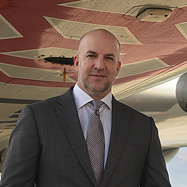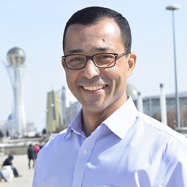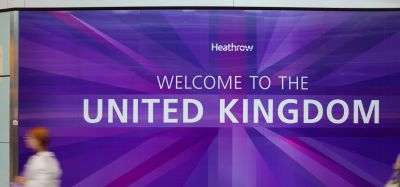Can we expect the privatisation trends to continue?
Posted: 15 August 2019 | Andrew O'Brian, Dr. Féthi Chebil, Hemant Mistry (IATA), Robert Carey (easyJet) | No comments yet
Investigating the evolution of airport development, International Airport Review asked a panel of industry experts to consider if airport privatisation helps the sector be better placed to tackle political, competitive and regulatory uncertainty.


  |   |   |   |
Hemant Mistry Director Global Airport Infrastructure & Fuel | Robert Carey Chief Commercial & Strategy Officer | Andrew O’Brian President and CEO Corporación Quiport Quito International Airport | Dr. Féthi Chebil Airport PPP Expert |
Hemant Mistry: Cash-strapped governments continue to look to the private sector to help develop airport capacity. But it is wrong to assume that introducing the private sector by itself provides all the answers.
This in turn has led to situations where the interests of airlines and passengers have not been fairly protected.
Airports are critical infrastructure. It’s essential that they meet the needs of customers and users, at a fair price. To help states make informed decisions, IATA in consultation with Deloitte developed guidance on the benefits of various airport ownership and operating models, and on how states can best ensure effective regulatory protection.
  |   |   |   |
Hemant Mistry Director Global Airport Infrastructure & Fuel | Robert Carey Chief Commercial & Strategy Officer | Andrew O’Brian President and CEO Corporación Quiport Quito International Airport | Dr. Féthi Chebil Airport PPP Expert |
Hemant Mistry: Cash-strapped governments continue to look to the private sector to help develop airport capacity. But it is wrong to assume that introducing the private sector by itself provides all the answers.
This in turn has led to situations where the interests of airlines and passengers have not been fairly protected.
Airports are critical infrastructure. It’s essential that they meet the needs of customers and users, at a fair price. To help states make informed decisions, IATA in consultation with Deloitte developed guidance on the benefits of various airport ownership and operating models, and on how states can best ensure effective regulatory protection.
Presently, an increasing number of airport privatisations are based on the concession model, where the government retains ownership of the asset and brings in a private operator to finance, build and/or operate the airport. We have seen many shortfalls in the way private bidders have been selected, primarily because the focus has been on the highest fee paid without due consideration of the end impact on airport costs and services. IATA has developed guidance on a more ‘balanced approach’ that secures benefits for all stakeholders. Regulatory certainty is key as well as having a clearly-defined mechanism for consultation, including timely investment needs.
Overall, done in the right way and for the right reasons, airport privatisation can offer many benefits. But we should work together to ensure the right decisions are made – the benefits should not just be short-term gains for governments and private operators – but rather for the interests of sustainable growth and improved services that will benefit the overall airport stakeholder community.
Robert Carey: Go back to the late 1980s and the privatisation of BAA in the UK, you will find easyJet did not exist. The thought that privately-owned LCC’s would fly more passengers than national carriers was laughable. But now the major forces in European airlines are private and dynamic. No one would look back and do anything but encourage the entrepreneurial spirit released through privatisation.
Is the same true of airports? Sadly not. Whilst the ownership may have shifted a little, there exist relatively few genuinely private enterprises that are free of government influence outside of the UK. Tariffs and regulation seem to dominate the discussions at major airports instead of how airlines and airports can work together to accommodate different business models and form commercial partnerships that benefit customers.
Only for those which fail to respond to passenger interests does there need to be targeted economic regulation.
Restricting commercial freedom to negotiate deals prevents the dynamic change we have seen in airlines. Commercial agreements rather than regulation show how to produce more efficient CAPEX decisions and genuine solutions in customer experience.
Meanwhile, governments often seem confused about their role and seek to maximise their return from privatisation whilst maintaining influence over outcomes. Where governments continue to struggle with budget deficits, privatisation will continue to be a source of funds. Our job is to ensure that when privatisation happens, it is the ‘right type’ of privatisation with a customer-focus to release entrepreneurial enterprise. When this happens, everyone benefits.
Andrew O’Brian: Our industry is changing at a very rapid pace and it faces constant challenges that are the result of worldwide events. Airports need to be ready to serve the growing air travel demand and all that comes with it: Increasing consumer expectations; safe, secure and efficient operations; sound financial performance with the right mix of revenues in order to be able to perform required investments in the long term; political changes; technological advances; threats. On top of this we must not forget our responsibility to the community and environment.
Facing these challenges is not an easy task for governments with reduced resources and increasing needs. A viable option, as seen over the last 30 years, is airport privatisation. The industry has realised the benefits this model can bring, where all players – airlines, passengers, regulators, airports, etc. – see a positive performance. However, ensuring the right terms are in place takes hard work that all involved parties need to be willing to do. I would surmise the mix of required ingredients for a successful partnership between the private and public sectors in three areas: Legal, financial and strategic/political.
From a legal perspective, there is a need for a clear framework, solid contracts, fair risk allocation and an appropriate term of contract. In terms of financial aspects, there must be attractive incentives, an agreement on how taxes and fees will be set, a financial model with a reasonable return on investment, that stipulates clear triggers for investment.
Finally, there ought to be agreement on the strategy; parties must share a vision for both short-term and long-term planning, understand stakeholders’ needs and be willing to collaborate in all aspects of the project.
Privatisation may only work if industry players follow the three c’s model: Collaboration, cooperating and communication. That is the baseline for our industry’s growth.
Dr. Féthi Chebil: Investment into airport development has proven successful for many years. Based on Modalis Database, for any airport PPP transaction signed during the last 15 years, the traded EBITDA versus transaction is in average of over 12 per cent.
For almost 35 years, airports have been privatised, around different legal structures. Government and private players are using more sophisticated legal and operational tools and mechanisms to mitigate the transaction risks aimed at dealing with more connected passengers, more demanding airlines and a more complex aviation industry.
The question is not whether the privatisation trend will continue or not. The key reasons that triggered airport privatisation are more persistent than ever. Hence, the risks are changing, and key players must mitigate these. The current key risks that are creating more pressure on airport privatisation are regulation and political stability, low-cost carriers’ impact on the traffic growth in many airports and dealing with government agencies and regulators. For example, on an operational level, investors expressed concerns about dealing with government agencies. The issues of concern include the uncertainty related to aleatory and arbitrary certification requirements and random, unstructured and non-transparent regulatory enforcement processes, the latter of which induces unforeseen costs and unwelcome distractions. This has led to an ever-increasing number of investors successfully transferring the risk of regulatory compliance and safety to a new type of dedicated cost-effective company: The ‘airside integrator’.
Investors have shown creativity and more sophisticated tools to mitigate risks, and this will make the airport privatisation trend more resilient.

















